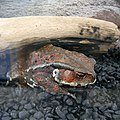Assortative mating
Assortative mating is a mating pattern and a form of sexual selection in which individuals with similar phenotypes mate with one another more frequently than would be expected under a random mating pattern. This phenomenon can be observed in many species, including humans, and has significant implications for the genetic structure of populations.
Overview[edit]
Assortative mating can be either positive or negative. Positive assortative mating, also known as homogamy, occurs when similar individuals mate with each other more frequently than would be expected by chance. This can lead to an increase in genetic relatedness within families. On the other hand, negative assortative mating, or heterogamy, occurs when dissimilar individuals mate more frequently. This can increase genetic diversity within families.
Mechanisms[edit]
The mechanisms behind assortative mating can be complex and multifaceted. They can include physical characteristics, such as size or color, behavioral traits, such as aggression or sociability, and even genetic markers. In many cases, these traits are correlated, leading to a phenomenon known as correlational selection.
Implications[edit]
Assortative mating has important implications for the genetic structure of populations. It can lead to an increase in the frequency of certain alleles, potentially leading to genetic drift and speciation. It can also influence the rate of inbreeding and the prevalence of certain genetic disorders.
In Humans[edit]
In humans, assortative mating is often observed with respect to physical characteristics, such as height and weight, as well as social factors, such as education and income. This can have significant implications for social inequality and the distribution of genetic traits in human populations.
See Also[edit]
References[edit]
<references group="" responsive="1"></references>

-
Scarlet lily beetle
-
Japanese toad
Ad. Transform your life with W8MD's Budget GLP-1 injections from $75


W8MD offers a medical weight loss program to lose weight in Philadelphia. Our physician-supervised medical weight loss provides:
- Weight loss injections in NYC (generic and brand names):
- Zepbound / Mounjaro, Wegovy / Ozempic, Saxenda
- Most insurances accepted or discounted self-pay rates. We will obtain insurance prior authorizations if needed.
- Generic GLP1 weight loss injections from $75 for the starting dose.
- Also offer prescription weight loss medications including Phentermine, Qsymia, Diethylpropion, Contrave etc.
NYC weight loss doctor appointmentsNYC weight loss doctor appointments
Start your NYC weight loss journey today at our NYC medical weight loss and Philadelphia medical weight loss clinics.
- Call 718-946-5500 to lose weight in NYC or for medical weight loss in Philadelphia 215-676-2334.
- Tags:NYC medical weight loss, Philadelphia lose weight Zepbound NYC, Budget GLP1 weight loss injections, Wegovy Philadelphia, Wegovy NYC, Philadelphia medical weight loss, Brookly weight loss and Wegovy NYC
|
WikiMD's Wellness Encyclopedia |
| Let Food Be Thy Medicine Medicine Thy Food - Hippocrates |
Medical Disclaimer: WikiMD is not a substitute for professional medical advice. The information on WikiMD is provided as an information resource only, may be incorrect, outdated or misleading, and is not to be used or relied on for any diagnostic or treatment purposes. Please consult your health care provider before making any healthcare decisions or for guidance about a specific medical condition. WikiMD expressly disclaims responsibility, and shall have no liability, for any damages, loss, injury, or liability whatsoever suffered as a result of your reliance on the information contained in this site. By visiting this site you agree to the foregoing terms and conditions, which may from time to time be changed or supplemented by WikiMD. If you do not agree to the foregoing terms and conditions, you should not enter or use this site. See full disclaimer.
Credits:Most images are courtesy of Wikimedia commons, and templates, categories Wikipedia, licensed under CC BY SA or similar.
Translate this page: - East Asian
中文,
日本,
한국어,
South Asian
हिन्दी,
தமிழ்,
తెలుగు,
Urdu,
ಕನ್ನಡ,
Southeast Asian
Indonesian,
Vietnamese,
Thai,
မြန်မာဘာသာ,
বাংলা
European
español,
Deutsch,
français,
Greek,
português do Brasil,
polski,
română,
русский,
Nederlands,
norsk,
svenska,
suomi,
Italian
Middle Eastern & African
عربى,
Turkish,
Persian,
Hebrew,
Afrikaans,
isiZulu,
Kiswahili,
Other
Bulgarian,
Hungarian,
Czech,
Swedish,
മലയാളം,
मराठी,
ਪੰਜਾਬੀ,
ગુજરાતી,
Portuguese,
Ukrainian

